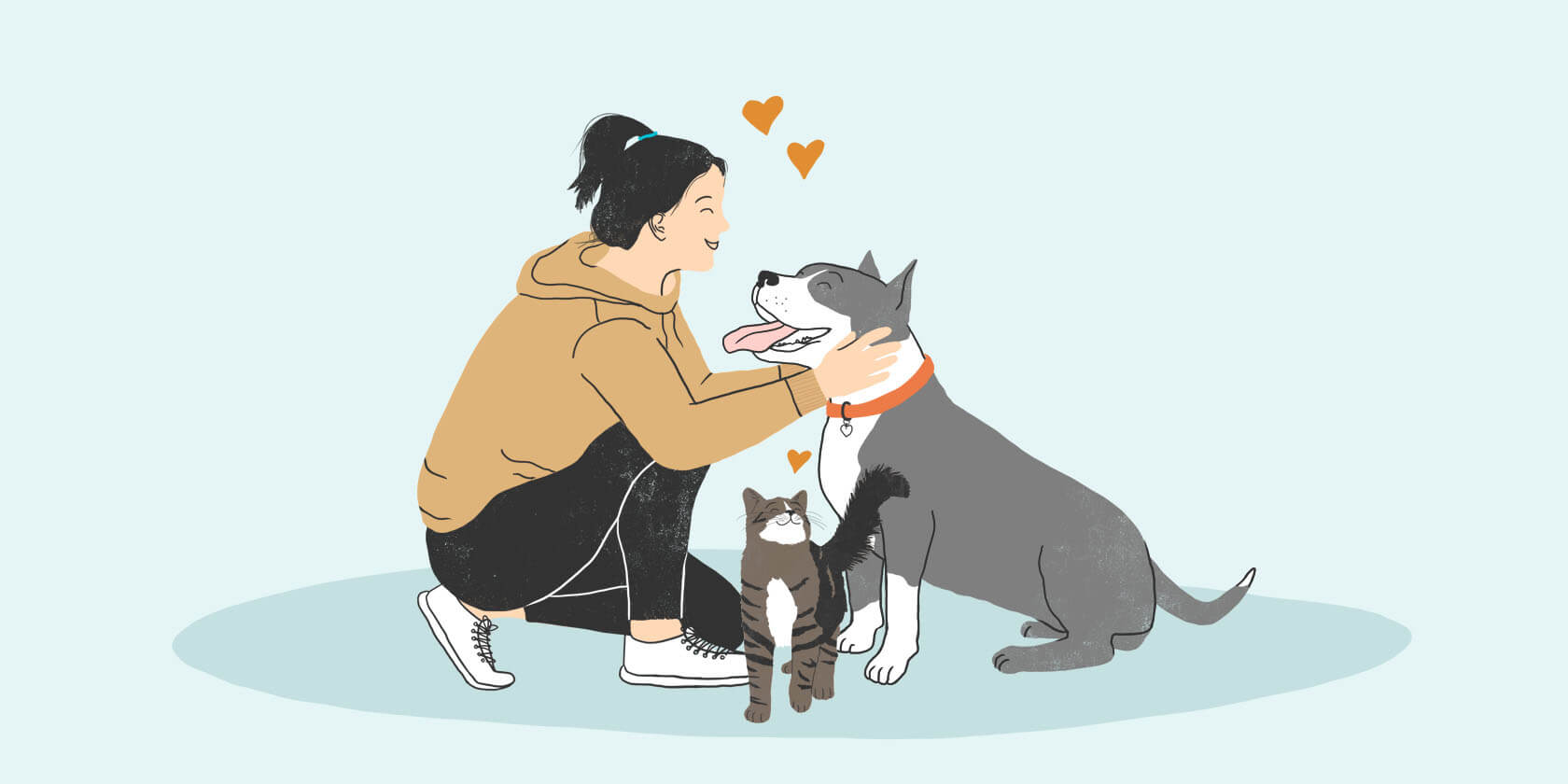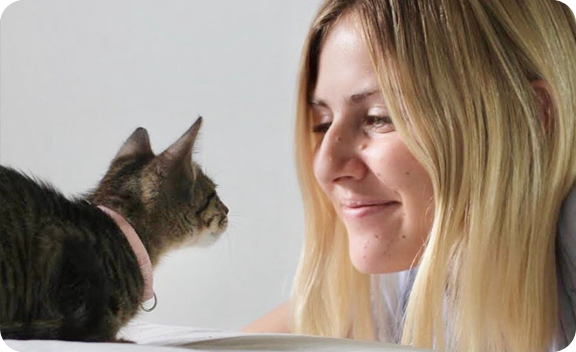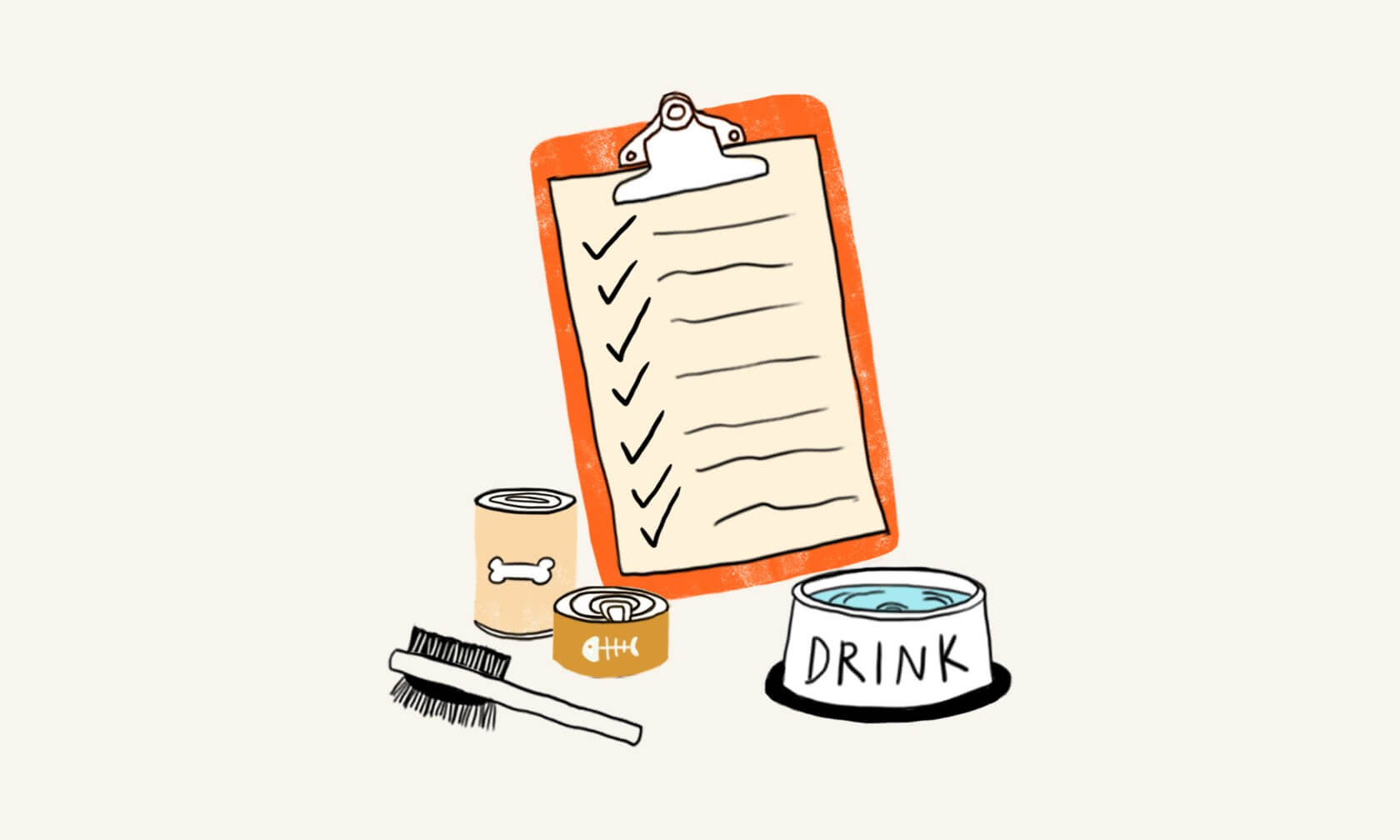You know your pet loves you, right? You feel that love when your dog wags their whole body once you walk in the door, or when your cat curls up in your lap and purrs for hours. But do our pets really feel and show love for us?
Current research points to yes! Although love is a complex emotion and impossible to directly measure in animals, studies have shown that dogs and cats do indeed form deep bonds of attachment to humans.1, 2 Our pets demonstrate behaviors — some unique to their species, some learned from people — that indicate attachment, affection, and yes, even love, toward their human counterparts.1, 2, 3

Studies of brain function using a special type of MRI have shown that dogs have a strongly positive emotional response when they see or smell their owners.4 Both humans and animals produce the hormone oxytocin, known as the "bonding" hormone.3This hormone is released in the brain when there are strong feelings of affection for another person or animal. And our pets show this flood of feel-good hormone in their brain by engaging in tail wagging or purring. Here are a few things that our dogs and cats do that show they love us, and some tips for how you can show love back to them in return!
How Dogs Show Affection
Many dogs show affection in over the top, in your face (literally) ways, while other dogs are more subtle — it all depends on their temperament and preferences. While each dog shows love in their own style, here is how to tell if your dog loves you.
Your Dog Seeks Out Your Attention Through Touch
Whether they’re licking your face, asking (well, more like demanding) to play, or deciding that they can fit on your lap (looking at you, Great Danes), dogs show affection through physical contact. Some dogs lean on us. Some dogs sit on our feet. Little dogs might stand on their hind legs and beg to be picked up and cuddled. Or your best friend may gently nose at your hand when they want attention or lay their head in your lap to be close to you.
Your Dog Gazes at You Lovingly
Relaxed eye contact is another way your dog might be communicating their love for you. Studies have shown that humans have transferred the mutual bonding moments of gazing into each other’s eyes to our pet dogs.2 With longer eye contact, our brains release oxytocin. Dogs can smell this hormone and they in turn release their own oxytocin. It’s a loop of love.
Your Dog Wags Their Tail When Near You
A happily wagging tail is an easy way to tell how your dog is feeling the love. While not all tail wagging means joy and excitement, a loose, relaxed wagging tail means delight in dog language. Some dogs work themselves up into a whole-body wag, as if every muscle is in on the action. Even dogs without tails will wag that little nubbin so hard their entire body seems to shake.
Your Dog Turns to Look Back at You on Walks
While your dog excitedly charges ahead on walks (and makes you hold on tight to the leash), chances are they turn around every so often and look back at you. That's because your dog wants to check that you're safe and keeping up. Your dog considers you part of their family and wants to make sure that no loved one gets left behind.
Signs Your Cat Loves You
While cats are sometimes more aloof than their canine counterparts, anyone lucky enough to share their life with a cat knows they have unique and wonderful ways of showing love. Here are a few signs your cat loves you.
Your Cat Purrs and “Talks” To You
When your cat keeps meowing or chatting at you, it's not always a demand to refill the food bowl — it's a sign of love and affection. Cats typically don’t meow at people they don’t have a connection with, so take it as a compliment. And purring is a sign of contentment in cats, so let them cuddle up on your lap and purr away.
Your Cat Head Bunts or Rubs Their Cheeks on You
Another uniquely feline way of showing love is your cat gently bumping you with their forehead (this is called "bunting"). Your cat might also rub their cheek against your face, hand, or legs. This is a way to mark you as a familiar (and safe) figure using feline facial pheromones.
Your Cat Brings You Gifts
While “love” might not be your first reaction to that dead mouse your cat left on your pillow, it really is a gesture of affection. Cats bring prey they've caught to those they care about. Whether it's a stuffed toy or an unlucky rodent, they want to share their bounty with you.
Your Cat Grooms or Kneads You
Some cats will lick and clean you as grooming is a sign of affection. Your cat might also knead on you with their front paws (also known as "making biscuits"). Kneading behavior in cats likely comes from days as a nursing kitten when similar paw movements would help stimulate milk production from their mother. Affection comes easy when your cat is comfortable around you.
Showing Your Dog or Cat Love in Return
Now that you know some ways your dog or cat shows their love for you, think about the ways your pet enjoys when receiving that love in return. Attention and touch are the easiest ways to reinforce your bond with your pet and to give both of you a big boost of feel-good oxytocin. So give them praise, playtime with their favorite toys, and some special treats. Rub those ears, scratch that chin, and stroke that beautiful coat. Most importantly, pay close attention to your pet's wants and needs and keep thinking of ways to keep their brains and bodies happy and healthy.
Our dogs and cats give us the incredible gifts of affection and companionship. In turn, we give them our love and protection. Remember to take moments out of your day to make sure your pet knows just how grateful you are and how much they mean to you.
ZPC-01025R2
- Payne E, Bennett PC, McGreevy PD. Current perspectives on attachment and bonding in the dog-human dyad. Psychol Res Behav Manag 2015; 8: 71-79.
- Vitale KR, Behnke AC, Udell MAR. Attachment bonds between domestic cats and humans. Curr Biol 2019; 29(18): R864-R865.
- Nagasawa M, Mitsui S, En S, et al. Oxytocin-gate positive loop and the coevolution of human-dog bonds. Science 2015; 348(6232): 333-336.
- Karl S, Boch M, Zamansky A, et al. Exploring the dog-human relationship by combining fMRI, eye-tracking and behavioural measures. Sci Rep 2020; 10, 22273.



